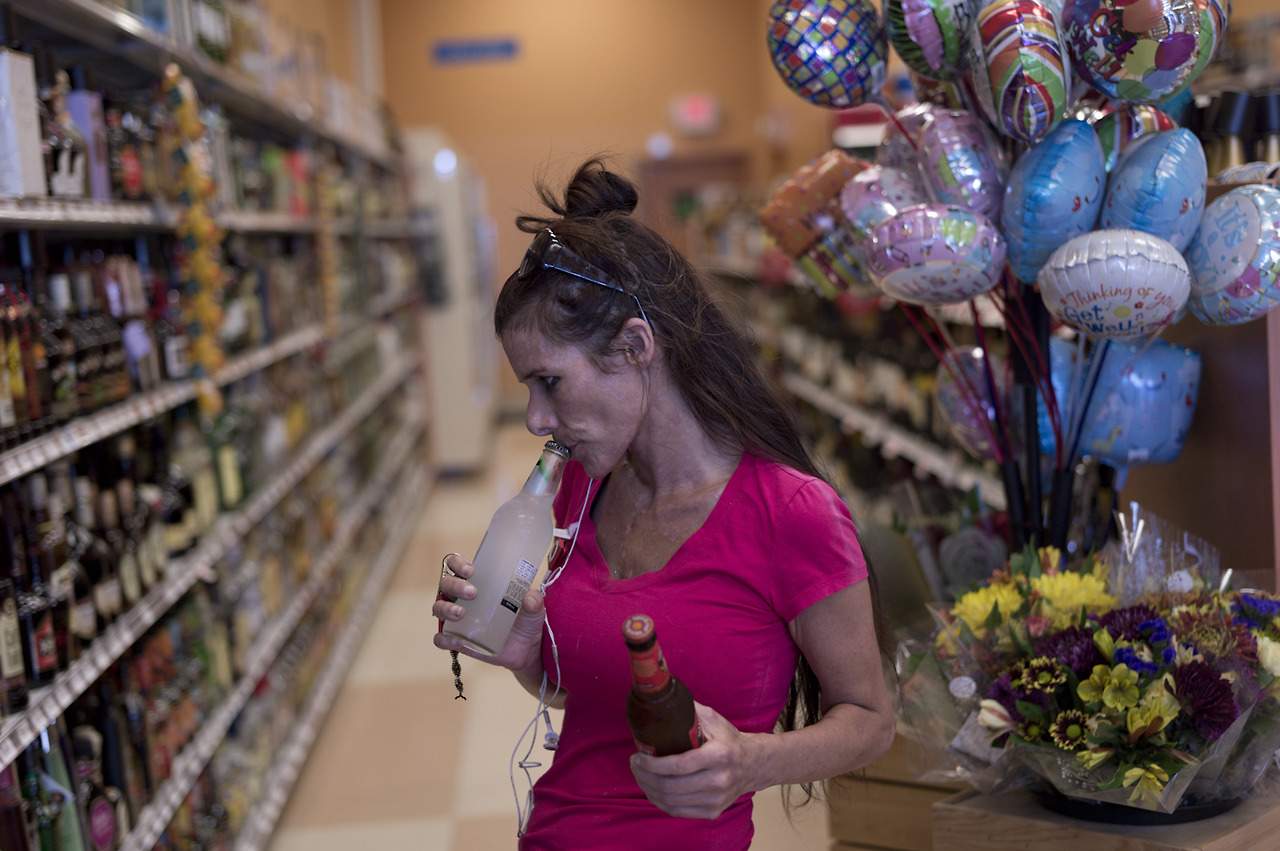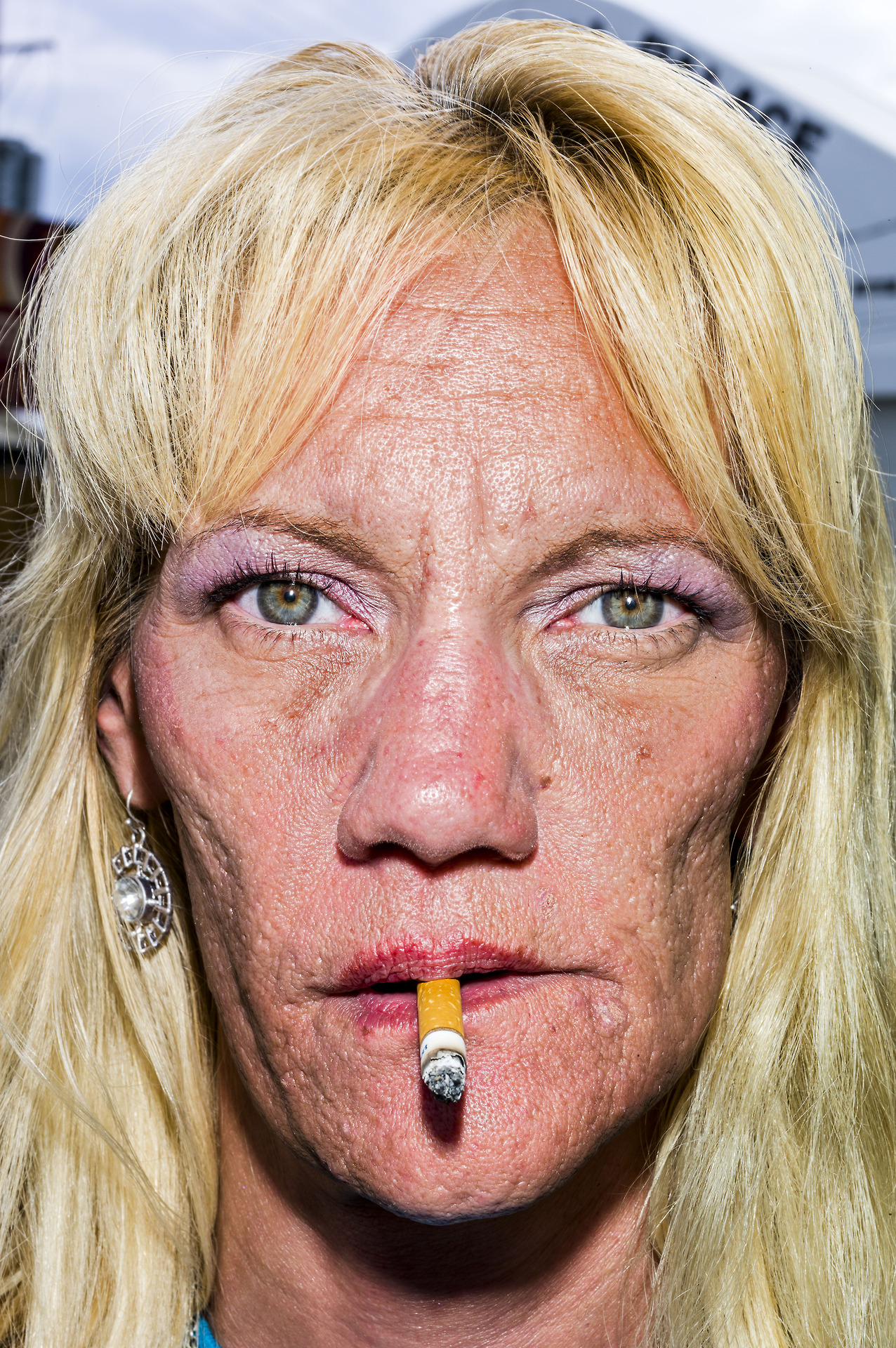
Image credit: Postcards from America Tumblr, Mikhael Subotzky
On a recent visit to the Harry Ransom Center’s exhibition "Radical Transformation: Magnum Photos in the Digital Age” I was inspired by how often Magnum photographers turned their lenses to capture that ever elusive “representative” photo collection of the U.S., as they do in their project “Postcards from America.” The concept behind the project is that a group of acclaimed Magnum photographers work collaboratively. In order to do this, they pile into a van and travel to different cities taking snapshots and uploading them directly to their Tumblr: http://postcardsfromamerica.tumblr.com/.
The “Postcards from America” official website explains that the goal of the project is “for the photographers to try to play like a band, in search of a kind of polyphonic visual sound.” With their invocation of the rock and roll ethos, and their premise of seeing America while on the road, the project brought to mind beat photographer Robert Frank. Frank’s collection, The Americans (complete with introduction by Kerouac), channeled the jazz prosody of Beat poetry into visual images. It’s probably the first and most famous instance of an effort towards the kind of “polyphonic visual sound” Magnum is talking about. In 1955 Robert Frank took off across America, often living out of his car and taking a staggering total of 28,000 photos (a kind of visual corollary to Kerouac’s Benzedrine-inspired scroll). The pictures, which feature apathetic waitresses, frantic street preachers, scenes of segregation, cowboys, drive in movies, and strip clubs, all seem propped towards a sort of thesis on America as grotesquely fanciful, and troublingly divided. The photographs could be read collectively as urging the already emergent progressivism of the 1960s. Still, they’re blended with the same old racial romanticism and sexism of the beat culture (in Kerouac’s introduction as much as the images).
There are, of course, differences between “Postcards from America” and The Americans, but the most crucial change to my mind is that the personal pleasure in the process which Kerouac and Frank document openly in their book, seems to have been replaced with a more outwardly productive angle which takes the form of letting subjects speak for themselves. One of the “Posctcards” group’s first stops was in Florida, to document the 2012 election. In one caption, for example, the subject says she doesn’t know whether she’ll bother to vote in the election. The next caption explains that the two men pictured have been stripped of their right to vote because of felony convictions. Through the juxtaposition there's an implied indictment of barring people with felonies from voting, and the apathy of most Americans -- but as there are no humans openly making any claims or taking any stakes, it feels distant.

Image credit: Postcards from America Tumblr, Bruce Gilden
Perhaps there is a corollary in trying to gauge how to best let subjects speak for themselves which explains the sometimes counterintuitive distance between lens and subject in the “Postcards from America” series. Frank’s photos are usually at comfortable distance for day to day interactions, mostly about 1-5 meters away, but in the “Postcards from America” series, portraits often feel like the aesthetically jarring godchild of Diane Arbus and Chuck Close. Take, for example, the portraits done by Bruce Gilden or Molly Candy, with harsh lighting and focus for unusual features. They could easily be critiqued as exploitative for all of the same reasons that Diane Arbus’s work was. Photos seem to be taken of people at either a few inches away, or in vulnerable situations: macho men on pink bicycles, teenagers sleeping at a state fair – personal space is documented and simultaneously disrupted to a much more radical degree than it was in The Americans. In a Slate article on the series, the reporter marvels that one man, who is curled up in bed in his portrait, let nearly perfect strangers into his home.
In an earlier post on Magnum documentarian Elliott Erwitt’s work, I remarked that the unmediated nature of the film left me on my own to form conclusions, and even to conduct research to understand the basic premise. With these photographs though, there are so many obvious interventions, nuanced tools for expression, that I wonder, does it make sense to say that these photographers upload their work "'live'--and unmediated" as the project website says they do?


Recent comments
2 years 29 weeks ago
2 years 44 weeks ago
2 years 44 weeks ago
2 years 50 weeks ago
3 years 4 weeks ago
3 years 4 weeks ago
3 years 4 weeks ago
3 years 6 weeks ago
3 years 6 weeks ago
3 years 6 weeks ago